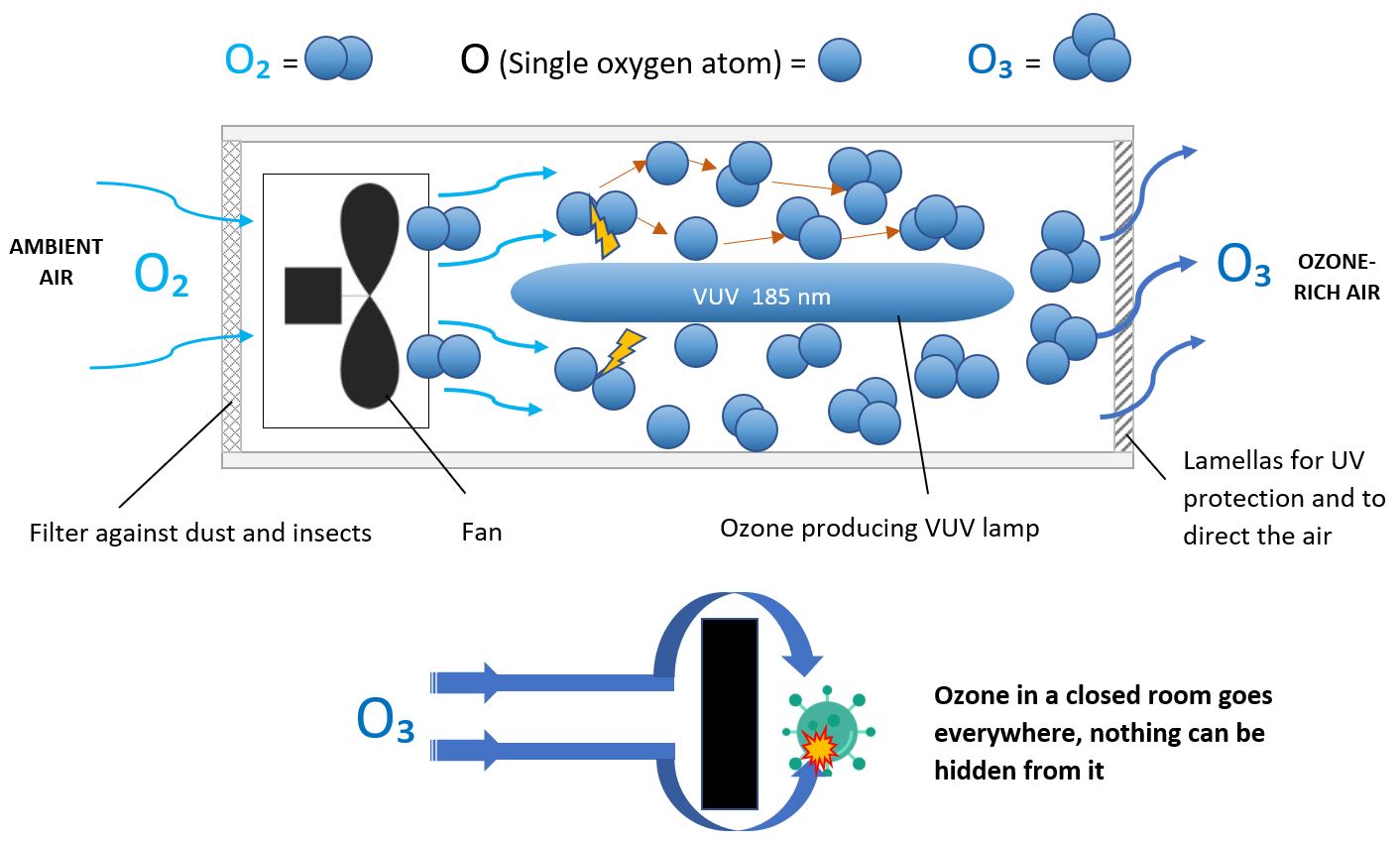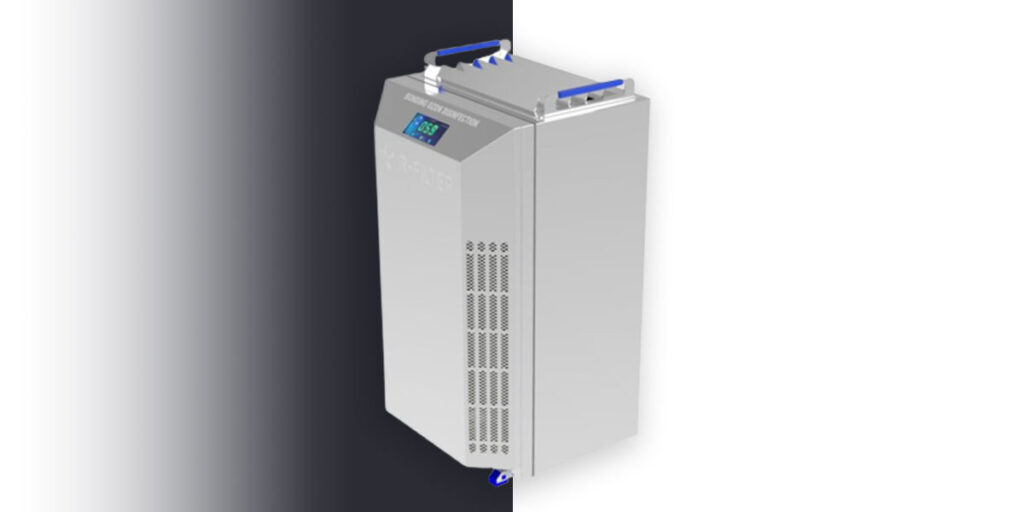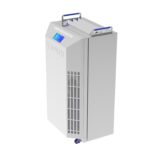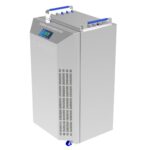UVO OZONIZER
Ozone treatment of indoor air is now a very common, widely used air purification and disinfection process. Our devices use VUV light for ozone production, rather than corona discharge. We do not need to use air preparation systems (air dryer or oxygen concentrator) that require extra costs and maintenance. The UV ozone generator, unlike the corona discharge generator, does not produce harmful nitrogen by-products and works extremely well even in humid air. In our case, the electrons connect the ozone molecule in bonding molecular orbital, while in the case of corona discharge, they mostly circulate in an anti-bonding orbital. In the latter case, ozone molecules do have higher energy, but they can be dangerous, as they can exert their decomposition properties unexpectedly and with great force even where we did not expect it.
The main advantage of ozone compared to other treatment methods for air disinfection is its ability to treat efficiently large air volumes. A gas that can reach every corners of the room, so it can disinfect the entire room effectively. It is characterized by very strong oxidizing and good penetration ability. As ozone gas is unstable, unreacted ozone converts quickly back into its original form, oxygen (O2), leaving behind no harmful by-products after the disinfection. It is recommended for use in apartments, industrial buildings, restaurant kitchens, doctor's offices, changing rooms and gyms, food storage rooms and all rooms where there is a need for clean air free of pathogens and unpleasant odors.
Functional principle
Large amount of ozone is produced in the reactor chamber from the oxygen content of the ambient air using VUV lamps tuned to a wavelength of 185 nm:

Formaldehyde (CH2O) as cause of a „new-building disease”: CH2O + 2O3 = CO2 + H2O + 2O2
Smell of rotten eggs (hydrogen sulfide H2S): H2S + O3 = SO2 + H2O
Smell of toilet (ammonia NH3): 2NH3 + O3 = 3H2O + N2
The radiation of the used VUV lamps (185nm + 254nm) not only allows ozone production, but also irradiated UV-C light at 254nm, have a strong germicidal, i.e. disinfecting, bactericidal effect. The synergistic combination of 185nm and 254nm radiation is very effective on the destruction of bacteria and viruses.
Once the amount of ozone to be introduced into the room to be treated has been entered, the ozone generation lamps are automatically switched off after the timed treatment process has been completed. Only the fans remain in operation to help break down the remaining ozone that is not used in the treatment. The ozone produced by the R-FILTER quickly converts back to its original form, oxygen (O2), with a half-life of up to 30-50 minutes when not involved in treatment processes, leaving no harmful residue. The higher the temperature and humidity of the room to be treated and the more dynamic the air flow, the shorter the half-life and the quicker you can enter the treated room. Once the treatment is complete, the device runs the fans for a further 4 hours, which increases the decomposition of the residual ozone not used in the treatment. When you then enter the treated room, you must immediately ventilate it well.

Features, benefits:
- disinfect the indoor air and surfaces effectively
- automatic ozone decomposition cycle
- program adjustable to room size (up to 1000m3)
- combined effect of photolysis and ozonolysis
- unlike corona discharge models, it does not produce nitrogen dioxide
- not sensitive to the humidity
- portable device
- cost-efficient
- minimal maintenance, chemical-free disinfection
On request, we will send you device data sheets after registration under the menu item "Contact".

